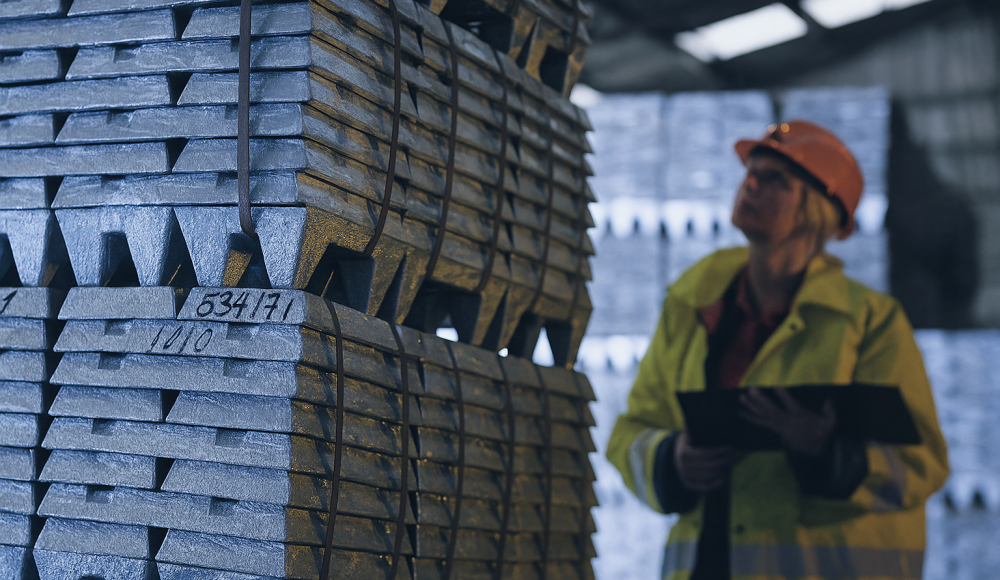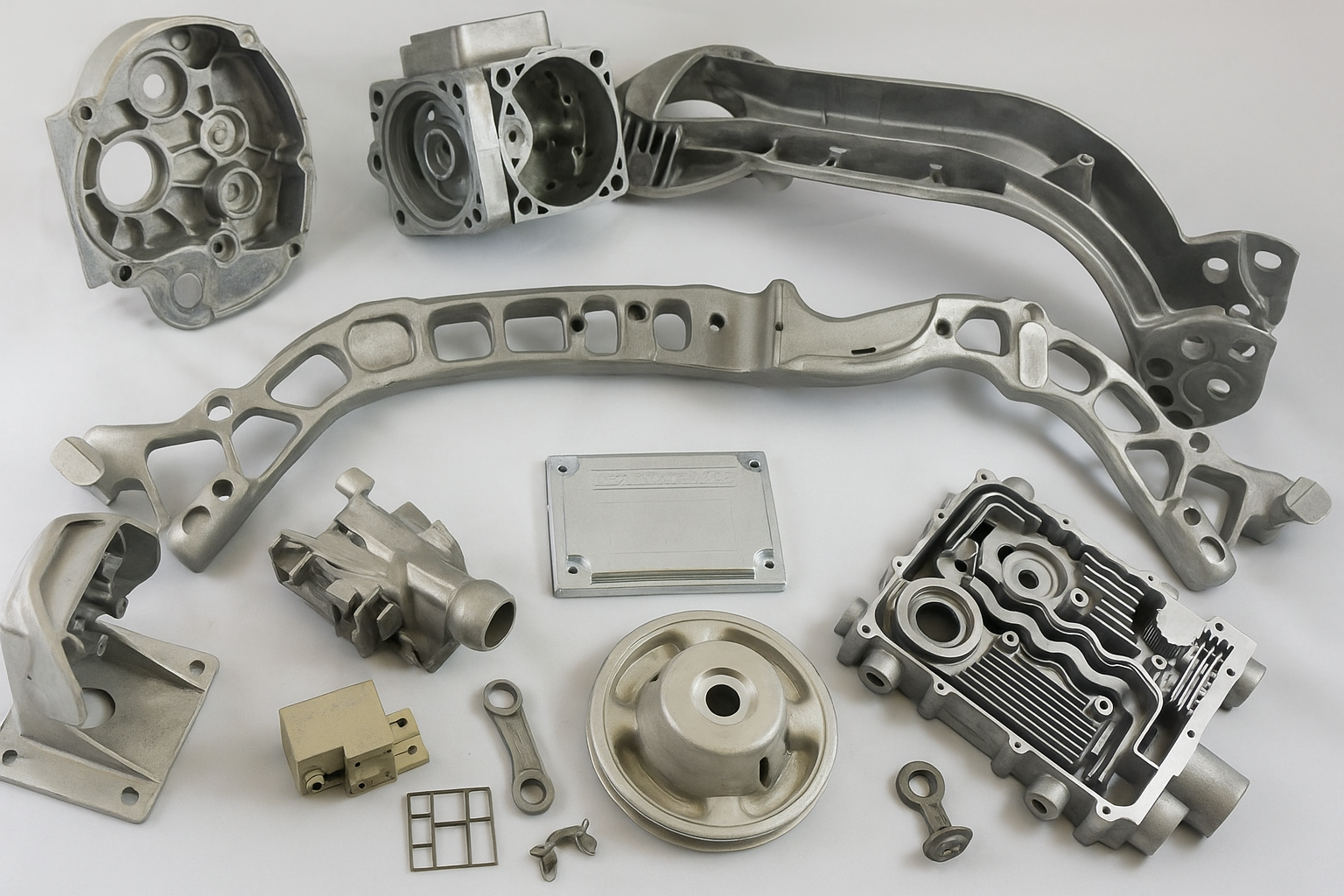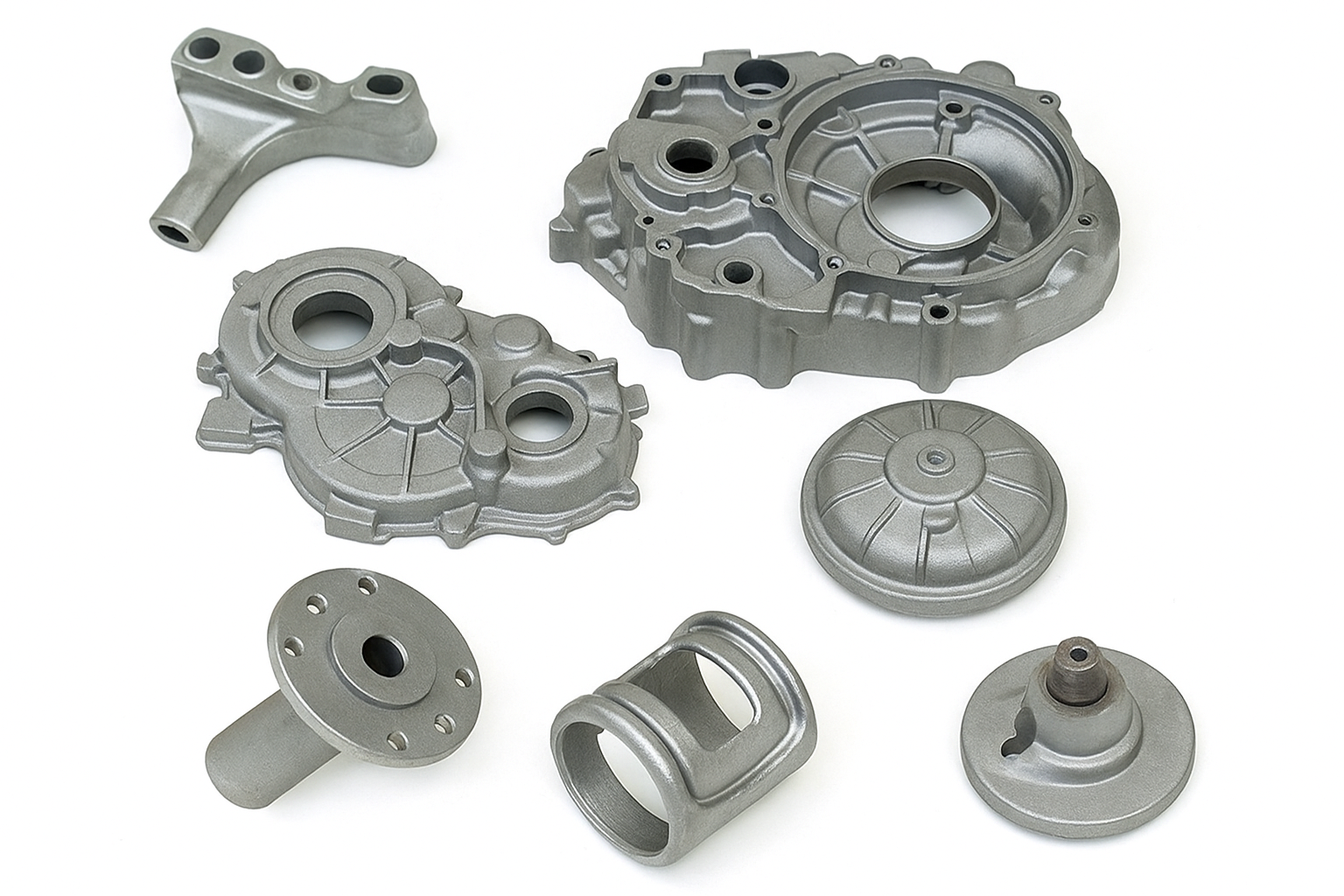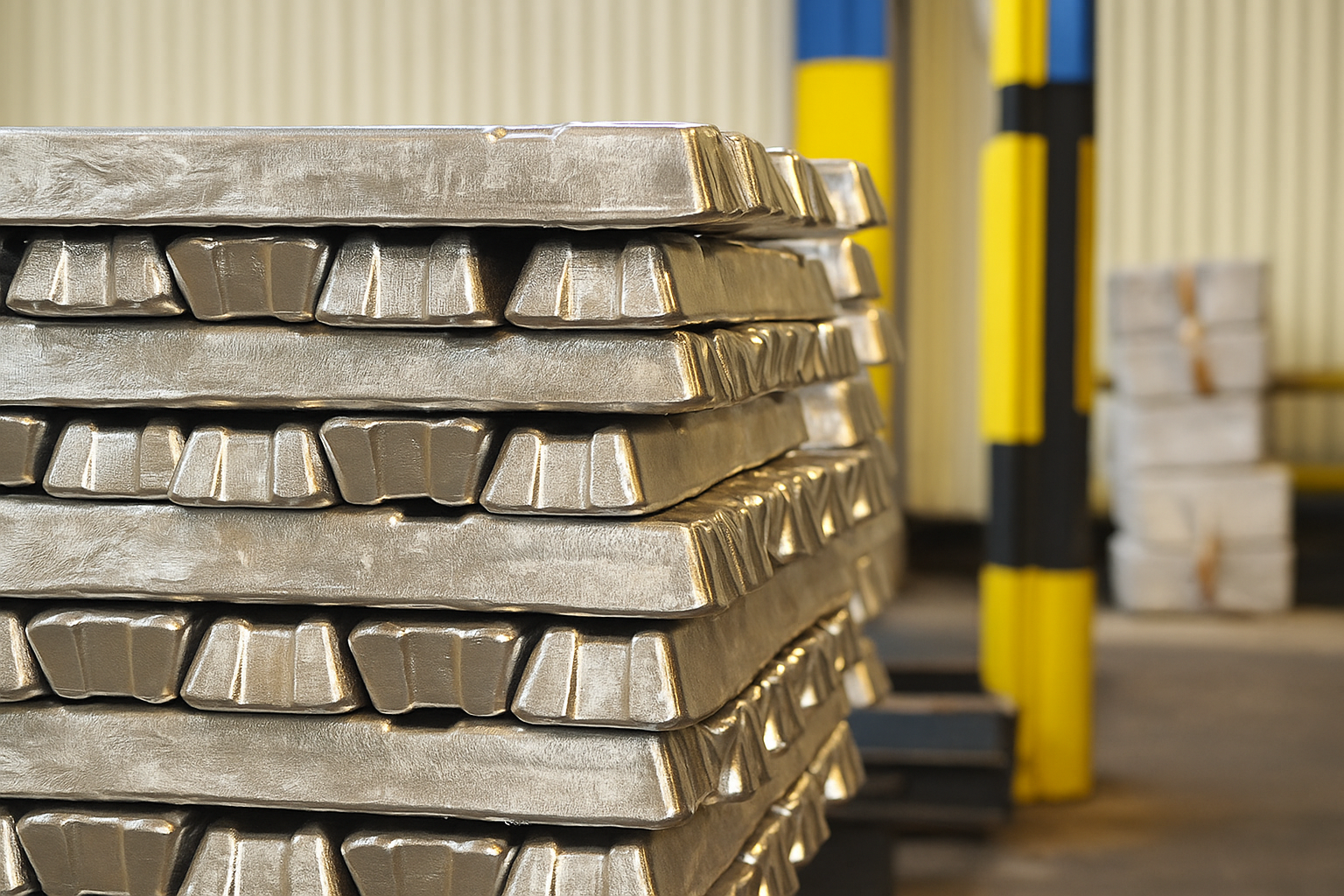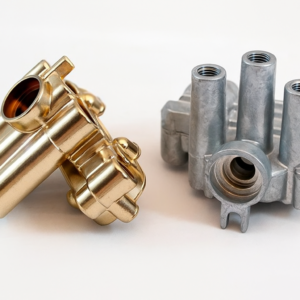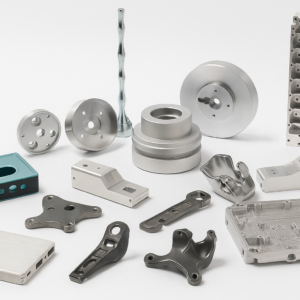يموت الصب is an advanced metal fabrication technique widely recognized for efficiently producing precise, high-volume metal parts. Among the critical factors that affect die casting quality, selecting the appropriate aluminum alloy is paramount. This article explores popular aluminum alloys used in die casting, thoroughly examining their unique characteristics, strengths, القيود, and suitable applications.
Why the Alloy Selection Matters
و سبيكة is a homogeneous combination of two or more metals or elements designed to enhance mechanical, الحرارية, and physical properties. في صب الألومنيوم, alloying aluminum with materials such as copper, السيليكون, الزنك, and magnesium significantly influences part performance.
The correct alloy choice directly affects:
القوة والمتانة: Determines the part’s ability to withstand mechanical loads without failure.
المقاومة للتآكل: Defines how effectively the alloy performs under harsh environmental conditions.
Heat resistance: Indicates suitability for high-temperature applications.
Casting properties: Influences how well the alloy fills molds and replicates detailed geometries.
Selecting an unsuitable alloy can lead to part failures, تآكل مبكر, excessive costs, or inadequate functionality. لذلك, understanding aluminum alloys’ characteristics is essential for successful die casting.
Popular Aluminum Alloys for Die Casting
2.1 A380 Aluminum Alloy
The A380 alloy is the most common die casting aluminum alloy due to its favorable balance of cost and performance.
مزايا:
Excellent general-purpose alloy
Lower cost compared to specialized alloys
Lightweight with good strength-to-weight ratio
الموصلية الكهربائية متفوقة
Good castability for detailed and intricate designs
محددات:
مقاومة التآكل المعتدلة; may require additional surface treatments
Not recommended for highly corrosive or high-stress environments
التطبيقات النموذجية:
المكونات الكهربائية
أقواس المحرك
علب التروس
المنتجات الاستهلاكية
2.2 A383 Aluminum Alloy
A383 aluminum alloy shares many properties with A380 but excels in castability.
مزايا:
Exceptional mold-filling capability, especially for intricate geometries
Improved thermal resistance, reducing risk of thermal cracking
Good dimensional stability at elevated temperatures
محددات:
Slightly higher cost compared to A380
Reduced mechanical durability in highly stressed applications
التطبيقات النموذجية:
Complex housing components
Thin-wall structures
Electrical fittings requiring fine details
2.3 A360 Aluminum Alloy
For projects demanding greater mechanical performance, A360 stands out.
مزايا:
Outstanding strength and ductility, especially under high temperatures
Superior corrosion resistance suitable for aggressive environments
Excellent dimensional stability
محددات:
Difficult to cast complex geometries due to limited mold-filling capabilities
Higher production cost per part
التطبيقات النموذجية:
مكونات السيارات
High-performance industrial equipment
Marine parts exposed to harsh conditions
2.4 ZA-8 Aluminum Alloy (Zinc-Aluminum Alloy)
ZA-8 is a zinc-aluminum alloy, featuring a lower aluminum content, resulting in higher density and lower melting point.
مزايا:
قوة عالية, صلابة, والمتانة
Usable in hot chamber die casting processes, accelerating production rates
Excellent surface finishing quality and dimensional stability
محددات:
Increased weight due to higher zinc content
Not ideal for weight-sensitive applications
التطبيقات النموذجية:
المكونات الصناعية
Mechanical housings
Decorative hardware requiring high strength and precision
2.5 ZA-12 Aluminum Alloy (Zinc-Aluminum Alloy)
With increased aluminum content, ZA-12 offers a well-balanced blend of mechanical properties.
مزايا:
Stronger and lighter than ZA-8 alloy
Good casting performance in cold chamber processes
Excellent tensile and impact strength
Good bearing qualities and wear resistance
محددات:
Requires cold chamber casting, limiting production speed
Higher processing costs compared to ZA-8 alloy
التطبيقات النموذجية:
Automotive parts requiring enhanced strength
High-stress mechanical components
Wear-resistant machine elements and gears
2.6 ZA-27 Aluminum Alloy (Zinc-Aluminum Alloy)
ZA-27 alloy possesses the highest aluminum content in the ZA-series, offering unmatched mechanical strength.
مزايا:
Exceptional strength and durability with low density compared to other ZA alloys
Superior wear resistance and thermal stability
Highest melting point in ZA alloys, suitable for demanding conditions
محددات:
Most challenging ZA-alloy to cast due to limited mold filling capability
Requires precise temperature control and skilled operators
Typically higher costs and limited casting facility availability
التطبيقات النموذجية:
Heavy-duty components
High-performance industrial fittings
Structural connectors and gears exposed to rigorous usage
Choosing the Right Alloy for Your Project
Selecting the right alloy requires careful consideration of specific factors:
بيئة التطبيق: Assess the alloy’s corrosion resistance, الاستقرار الحراري, والظروف البيئية.
تعقيد الجزء: Complex geometries may necessitate alloys with better castability, such as A383.
Strength and Durability Needs: If strength is critical, consider higher-strength alloys like A360 or ZA-27.
حجم الإنتاج & كفاءة التكلفة: Balancing material performance and budget constraints influences the alloy selection.
Understanding these considerations allows precise alloy choices, ensuring reliable parts that meet your specific requirements and constraints.
Working with a Die Casting Expert
Consulting with industry experts like Tops Precision significantly benefits alloy selection and project success. Experienced casting professionals offer valuable insights into:
Alloy performance for specific applications
Design recommendations for improved manufacturability
Cost-effective casting strategies and production methodologies
Collaborating with knowledgeable die casting providers ensures optimized results, انخفاض التكاليف, and successful project outcomes.
خاتمة
Aluminum alloys play a crucial role in successful die casting projects. Choosing the right alloy directly impacts component strength, متانة, المقاومة للتآكل, وتكاليف الإنتاج الإجمالية. Whether your priority is low cost and general utility (A380), intricate castability (A383), enhanced strength (A360), or specialized zinc-aluminum alloys (ZA-series), clearly understanding each alloy’s characteristics is essential.
Engaging with professional die casting providers further maximizes these benefits, optimizing alloy selection and manufacturing efficiency for superior, أجزاء موثوقة.
الأسئلة الشائعة
س: What’s the most cost-effective aluminum alloy for general die casting?
أ: A380 aluminum alloy is the most cost-effective general-purpose alloy, balancing price and performance effectively.
س: Which aluminum alloy is best for complex part geometries?
أ: A383 alloy provides excellent mold-filling capabilities and reduces thermal cracking, مثالية للتصاميم المعقدة.
س: Which alloy offers the best strength for demanding industrial applications?
أ: ZA-27 offers unmatched mechanical strength and durability among aluminum-based alloys, ideal for heavy-duty components.
س: Can ZA alloys be used in hot chamber die casting?
أ: Only ZA-8 is suitable for hot chamber die casting due to its lower melting point. ZA-12 and ZA-27 require cold chamber processes.

